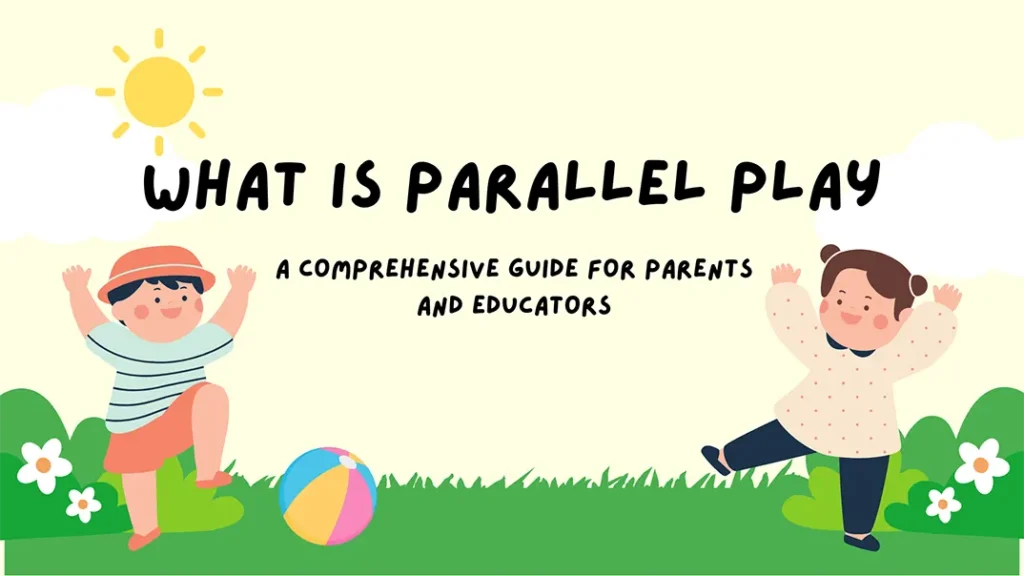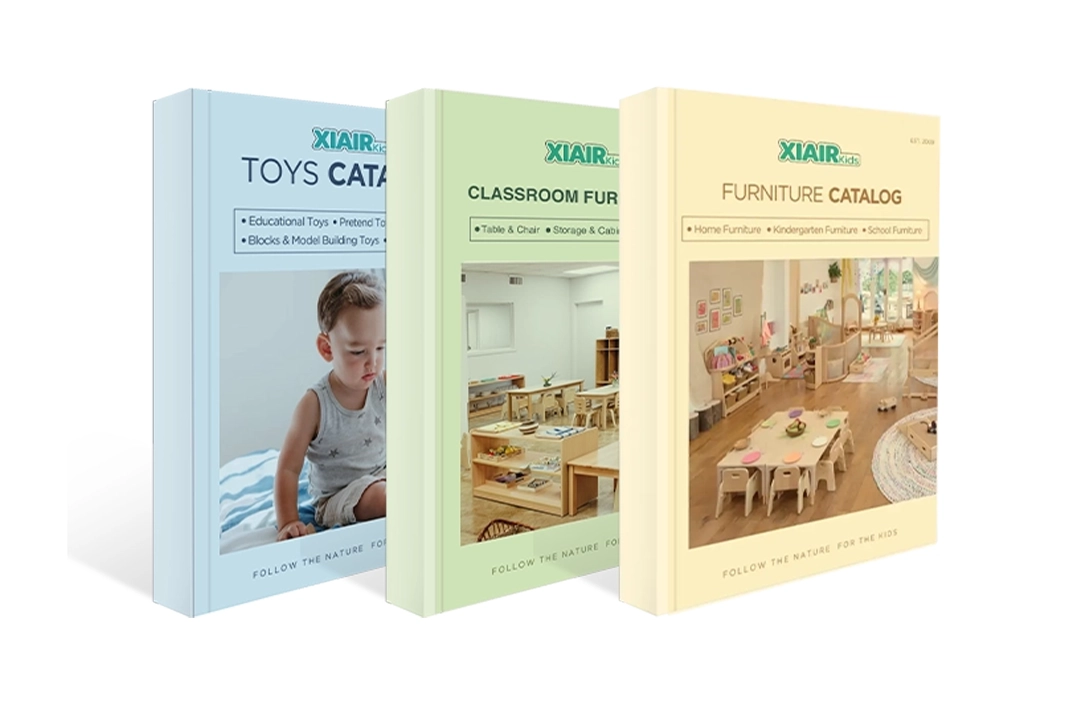Have you ever noticed two children playing side by side without interacting much? You may wonder, “Is this normal? Are they developing the right social skills?” Many parents and educators worry when children engage in solitary play, questioning whether they miss out on essential interactions with their peers. Understanding these behaviors is crucial, but knowing how to interpret or support them effectively is not always easy.
The answer lies in a concept known as parallel play, a key developmental stage in early childhood. Children play next to each other during this stage, but don’t engage directly. They observe and learn from one another, enhancing their cognitive and social abilities. Contrary to popular belief, parallel play supports a child’s growth, setting the foundation for later cooperative play and group interactions.
Are you curious to learn how parallel play influences child development? Do you want to discover ways to encourage this important stage in home and classroom settings? Keep reading to explore practical tips and expert insights that can help us support children during this vital phase of their lives.
What Is Parallel Play in Child Development?
Parallel play is a crucial stage in early childhood development that typically occurs between 2 and 3 years old. During this stage, children engage in play activities next to one another, but not directly with each other. Though they might be involved in similar activities, such as building blocks or drawing, there is very little interaction between the children. It’s important to note that while these children aren’t actively playing together, they are still observing and learning from one another, which plays a significant role in their social development.
At its core, parallel play is a form of independent play that encourages children to engage with their environment and peers at a comfortable pace. This behavior is normal as part of the natural development process. As children grow, they transition into more interactive forms of play, such as associative and cooperative play, where sharing, taking turns, and collaborating with others become key components of their playtime.
It’s important to recognize that parallel play is not a sign of isolation or social withdrawal. Instead, it reflects the child’s ability to engage with toys and activities in a social environment independently. As such, this stage should be seen as a positive and crucial part of a child’s development, promoting self-confidence and laying the foundation for future social interactions.
The Importance of Parallel Play in Child Development
Parallel play is crucial in the early stages of a child’s social and cognitive development. While it may seem like children are playing alone, this stage is vital to their overall growth, offering numerous benefits that pave the way for more complex social interactions later on.

1. Enhancing Social Awareness
Although children in parallel play do not directly engage with each other, they are still keenly observing their peers. This helps them develop an understanding of social norms and behaviors. For instance, they learn about sharing space, respecting boundaries, and observing how others use toys or engage in activities. These observations are the first steps toward social understanding and are vital in building the foundation for empathy and cooperation in the future.
2. Building Independence
Parallel play fosters a sense of independence as children focus on their tasks, whether stacking blocks or coloring. By concentrating on their play, children strengthen their ability to entertain themselves and develop problem-solving skills. This independence is an important life skill that will benefit them not just in the classroom, but in all future social settings.
3. Promoting Cognitive Development
Children often engage in activities that challenge their cognitive abilities during parallel play. For example, they may work on puzzles, play pretend, or manipulate small objects. These activities enhance their fine ทักษะการเคลื่อนไหว, memory, and cognitive flexibility. Even though they play separately, these activities stimulate cognitive development, allowing children to explore different concepts and learn through trial and error.
4. Emotional Regulation and Confidence
Parallel play also supports emotional development by giving children a safe space to practice self-regulation. Since the child is not yet engaged in cooperative play, they are less likely to experience frustration over sharing or taking turns. This allows them to focus on enjoying the play experience and develop confidence in their abilities. Over time, as they move toward more interactive play, they will feel more equipped to handle social challenges, such as managing disappointment or negotiating with others.
5. Laying the Foundation for Future Social Play
The importance of parallel play extends beyond its immediate benefits. It serves as the groundwork for more complex forms of play, such as associative and cooperative play. In these later stages, children will begin to collaborate, share resources, and engage in more structured interactions. However, they need the experiences from parallel play to understand basic social cues, develop language skills, and build self-confidence before fully participating in these advanced types of play.
Mildred Parten’s Stages of Play
Mildred Parten’s stages of play are a widely recognized framework in early childhood development that describes the progression of children’s social interactions during play. Developed by Mildred Parten in 1932, these stages highlight how children’s play behavior changes as they grow and develop social skills. The theory outlines six stages of play, ranging from solitary activities to more complex social interactions. Below is a breakdown of each stage:
Unoccupied Play

Unoccupied Play Definition: Unoccupied play is when a child is not actively playing but may engage in random movements or exploration. At this stage, children are typically very young (around 0 to 3 months old) and are still developing motor skills.
Characteristics:
- The child is not engaged in any specific activity but may explore their environment by moving their body or focusing on objects.
- This stage is more about sensory exploration than interaction with others.
Solitary Play (Independent Play)

Solitary Play Definition: Solitary play occurs when a child plays alone with toys or engages in activities that do not involve interaction with other children. This type of play typically happens around 18 months to 2 years of age.
Characteristics:
- The child is focused on their activity and is not interested in the activities of others.
- While playing alone, the child may be deeply engrossed in their play, displaying creativity and imagination.
Onlooker Play

Onlooker Play Definition: Onlooker play occurs when a child watches other children play but does not engage or participate directly. This stage is typically observed in children between 2 and 3.
Characteristics:
- The child is interested in others’ play but does not take part.
- The child may observe intently and sometimes even imitate the behaviors they see, but remains a passive participant.
Parallel Play

Parallel Play Definition: Parallel play is when children play side by side but do not interact directly. This stage typically occurs between 2 and 3 years, following solitary and onlooker play.
Characteristics:
- Children play independently but near each other, often with similar toys or activities.
- While there is no direct communication or interaction, children may occasionally mimic each other’s actions or observe each other.
- There is an awareness of other children, but the play is independent.
Associative Play

Associative Play Definition: In associative play, children begin to interact with each other during play, but the play itself is not highly organized. This stage typically occurs around 3 to 4 years of age.
Characteristics:
- Children share toys, talk to each other, and may mimic each other’s actions.
- While they interact, the play is not organized or directed toward a common goal. There is a lot of individual focus, and children may drift in and out of play together.
การเล่นแบบร่วมมือ

Cooperative Play Definition: Cooperative play is the most advanced stage, where children work together with a shared goal, often engaging in organized activities. This type of play typically begins around 4 to 5 years of age.
Characteristics:
- Children engage in joint activities with shared objectives, such as building something together, playing a game with rules, or participating in role-playing activities.
- There is a higher level of social interaction, with children cooperating and coordinating their efforts.
Examples of Parallel Play
Parallel play is a stage in early childhood development where children engage in activities side by side without direct interaction. Although they may not actively engage with one another, they are often learning through observation, imitation, and shared space. Below are some common examples of parallel play that can be seen in both home and preschool environments:
1. Building Blocks or Legos
Two children may sit next to each other, each building their structure with blocks or Legos. While they may use the same materials, they don’t collaborate on building one structure. Instead, they may focus on their creations, occasionally glancing at each other’s work, encouraging learning and inspiration.
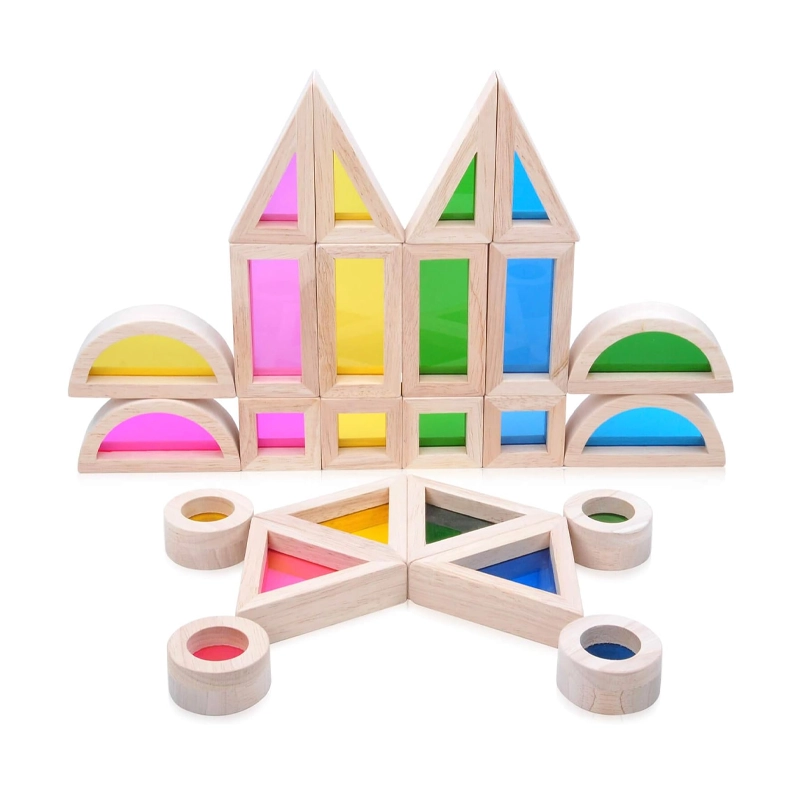


2. Drawing or Coloring
Imagine two children sitting at a table with paper and crayons. Both may be coloring their pictures, but aren’t interacting or sharing ideas about their drawings. They might glance at each other’s artwork, but each child is engrossed in their creative process.
3. Playing with Dolls
Children may sit on the floor near each other, playing with their dolls or action figures. One child might be making their doll talk, while the other arranges their dolls in a specific order. Although not directly interacting, they engage in imaginative play and may occasionally observe the other’s actions, learning through imitation.
4. Pretend Play with Kitchen Sets
Children may have access to a play kitchen in a preschool or home setting with toy pots, pans, and food items. While one child may pretend to cook a meal, the other may set the table or “serve” the food. Although they play in the same space with similar toys, they do not yet collaborate meaningfully. Instead, they are independently engaged in their version of pretend play, learning to navigate their roles within the activity.
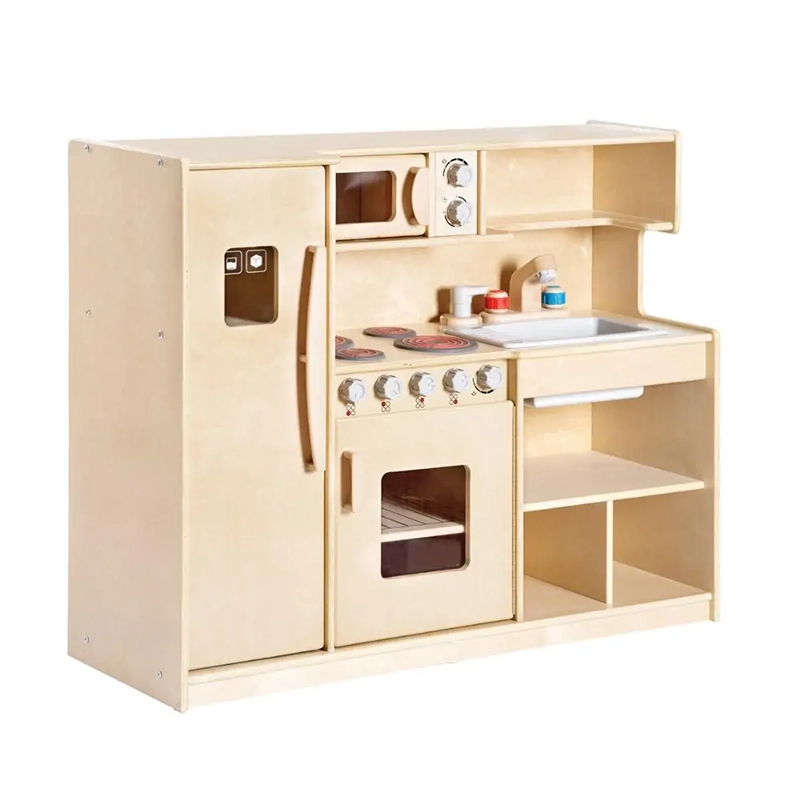
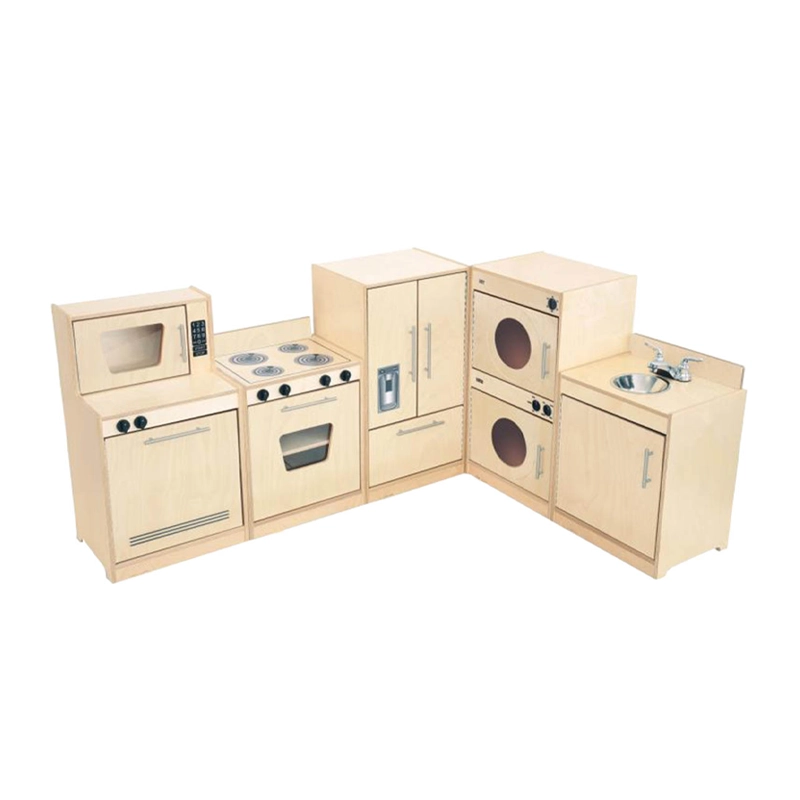
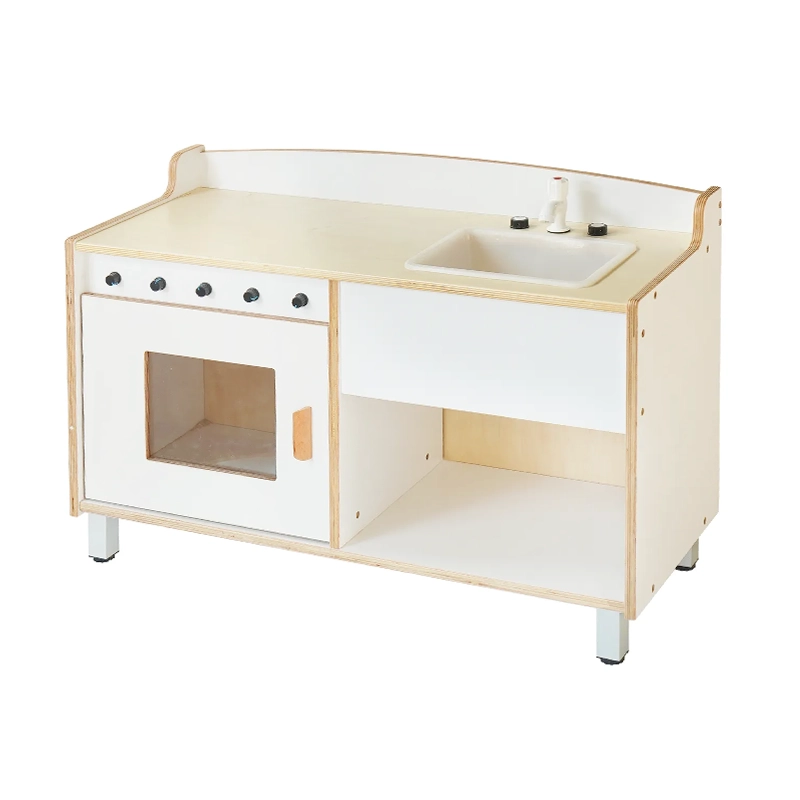
ห้องเรียนที่สมบูรณ์แบบของคุณอยู่ห่างออกไปเพียงคลิกเดียว!
5. Playing with Puzzles
Two children may sit at a table, each working on a puzzle. Although the puzzles are different, both children may be working through the same process of fitting pieces together and figuring out solutions. This example of parallel play promotes cognitive development, problem-solving, and fine motor skills and provides opportunities for observational learning as the children observe each other’s techniques and strategies.
6. Sensory Play with Sand or Water
When children engage in sensory play, such as playing with sand, water, or playdough, they often do so side by side. One child may dig and create sandcastles, while the other fills a container with water or shapes dough. Though they may not communicate directly, their shared experience of sensory exploration provides a rich environment for parallel play.
How to Encourage Parallel Play?
Encouraging parallel play in young children is crucial for their social and cognitive development. At this stage, children play alongside others without direct interaction, which may seem passive, but it’s an important phase that helps children develop independence and social skills. Here’s how parents and educators can support parallel play effectively:
Create a Safe and Stimulating Environment
To encourage parallel play, ensure children can access a safe, engaging play area with various age-appropriate toys. Options like building blocks, art supplies, or puzzles allow children to explore independently while remaining near their peers. A well-organized, distraction-free space also helps foster independent play alongside others.
Provide Similar Toys and Materials
Providing similar toys or materials can make parallel play more engaging. For example, offering two sets of blocks or multiple drawing stations allows children to play side-by-side while focusing on individual activities. This encourages observation and imitation, essential aspects of this developmental stage.
อย่าแค่ฝัน แต่จงออกแบบมัน! มาพูดคุยเกี่ยวกับความต้องการเฟอร์นิเจอร์สั่งทำของคุณกันเถอะ!
Model Social Behaviors
Children often learn by watching others. Parents and educators can model social behaviors by engaging in parallel activities with other adults or children. For instance, playing with blocks or drawing alongside children allows them to observe positive social interactions, making them feel more comfortable participating in parallel play.
Encourage Group Play Opportunities
Arranging playdates or group activities that naturally involve side-by-side play helps children practice being near others without forcing interaction. For example, setting up activities like building together or drawing on a large sheet of paper allows children to engage with each other while still maintaining their independence.
Provide Positive Reinforcement
Reinforce parallel play by offering praise and encouragement. When children engage in independent play next to others, acknowledge their efforts by saying, “I see you’re both playing with blocks, great job exploring together.” This boosts their confidence and reinforces the importance of independent play within a social setting.
Be Patient and Understanding
Remember, parallel play is a normal and important developmental stage. Children may need time before transitioning to more interactive forms of play, and that’s okay. Allow them the space to engage in parallel play without rushing them into group interactions. Over time, they will naturally progress to more cooperative play.
Use Parallel Play to Teach Social Skills
Parallel play provides a natural opportunity to teach children basic social skills like respecting personal space and observing others. By gently guiding children to notice how their peers play or share toys, you can help them learn important social behaviors in a relaxed, non-threatening way.
Creating an Environment That Supports Parallel Play
A well-designed physical environment plays a crucial role in encouraging parallel play, allowing children to engage in independent activities while still being aware of their peers. Parents and educators can foster a space that promotes observation, independence, and social learning by carefully setting up the play area. Here’s how to create a physical space that supports parallel play effectively:

1. Create Defined Activity Zones
Organizing the play area into clearly defined zones for different activities to encourage parallel play is important. For example, create separate areas for building blocks, puzzles, pretend play, and art activities. These zones allow children to explore different types of play independently, but within proximity to each other. By having distinct spaces, children can engage in their activities without crowding each other, which helps them focus on their tasks while still being near other children.
2. Ensure Ample Space Between Play Stations
While the play areas should be defined, there should also be enough space between them to avoid crowding and ensure that children have room to move freely. If the space feels cramped, children may feel restricted and unable to focus fully on their play. Providing enough physical distance between activities encourages children to respect one another’s space while allowing them to observe and learn from their peers without feeling pressured to interact.
3. Use Low Shelving and Transparent Storage
For a space that promotes independence and autonomy during parallel play, consider using low shelving units or transparent storage bins that children can easily access. This allows them to choose their play materials independently without needing adult intervention. When children can select their toys and materials, they are more likely to engage in self-directed play and be more confident in their choices, which is crucial for parallel play.
4. Organize Materials by Type and Size
To make it easy for children to engage with different activities, organize play materials by type and size. For example, keep art supplies in one area, build toys like blocks, and use sensory play materials like sand or water in another section. The more organized and accessible the materials are, the more likely children will engage in parallel play. Clear bins or labeled containers also make it easier for children to find and put away materials, which fosters a sense of responsibility and independence.
5. Create Quiet and Active Zones
Not all children thrive in the same type of environment. Some might enjoy active play like building or running, while others prefer quieter activities like drawing or reading. Designing separate quiet and active zones allows children to choose the activity that best suits their mood and energy levels. The active play zones could include areas for movement and building, while the quieter zones could be for solitary activities like reading or puzzles.
6. Use Dividers or Soft Barriers
If the play area is large and you need to create smaller, more focused spaces, consider using soft dividers or low furniture to define the boundaries of each activity zone gently. These dividers can help reduce distractions, providing each child with their own space to focus on their task, but still allowing them to be visually aware of the other children around them. This subtle separation encourages parallel play by creating distinct areas without isolating children completely.
7. Ensure Comfortable Lighting and Ergonomics
Lighting plays a key role in creating a comfortable and inviting space. Ensure the room is well-lit, but avoid harsh, direct lighting that can be overwhelming. Soft, natural light is ideal for creating a calm atmosphere where children feel safe and focused. Additionally, ensure that play furniture, such as tables and chairs, is age-appropriate and comfortable for children. The more comfortable the children are in the space, the more likely they are to stay engaged in their activities.
8. Minimize Overstimulation
A well-organized play area that supports parallel play should avoid sensory overload. Too many bright colors, loud noises, or overwhelming textures can distract children and make it harder for them to focus on independent activities. Instead, choose a color palette that is calming and soothing, such as pastel tones or neutral colors, and limit excessive decoration or loud sounds. This helps children concentrate on their play without becoming overwhelmed.
Parallel Play vs. Solitary Play: Understanding the Difference
| ด้าน | Parallel Play | Solitary Play |
|---|---|---|
| Definition | Children play side by side, near each other, but do not directly interact. | Children play alone without any interaction with others. |
| ช่วงอายุ | Child focuses entirely on their activity, with no attention to others. | Common in younger children, typically from 18 months to 2 years. |
| การปฏิสัมพันธ์ทางสังคม | Typically occurs between 2 and 3 years of age. | With minimal interaction, children may observe and occasionally mimic each other. |
| พฤติกรรม | Children engage in similar activities but independently. | Child focuses entirely on their own activity, with no attention to others. |
| Developmental Purpose | Helps children develop social awareness and observational skills. | Focuses on self-exploration and the development of independent play skills. |
| Examples | No interaction with other children; the child is completely independent. | A child playing with toys or drawing alone, with no attention to others. |
| ทักษะทางสังคม | Promotes early social learning through observation and proximity. | Limited social skill development, as the child is solely focused on themselves. |
Characteristics of Parallel Play Difficulties in Children
While parallel play is a natural phase in early childhood, some children may face difficulties during this stage. Understanding these challenges helps parents and educators provide appropriate support to ensure healthy social development. Here are common difficulties children may experience during parallel play:
1. Social Withdrawal or Shyness
Some children may appear withdrawn during parallel play, avoiding playmates or sitting away from the group. This can be a sign of social anxiety or a lack of confidence in their social abilities. These children may find it challenging to share space with others, let alone engage in play.
Possible Causes:
- Introversion or temperament
- Anxiety or fear of social interaction
- Limited previous social experiences
2. Difficulty with Sharing or Respecting Boundaries
Although parallel play doesn’t require direct interaction, some children struggle with sharing play materials or respecting personal space. They may attempt to take toys from others or occupy more space than necessary, which can interfere with the flow of parallel play and create tension.
Possible Causes:
- Limited social experience with sharing
- Underdeveloped understanding of boundaries
- Lack of emotional regulation skills
3. Impulsivity or Disruptive Behavior
Some children may exhibit impulsive or disruptive behaviors during parallel play, such as grabbing toys, making loud noises, or suddenly changing activities. While this behavior may not be entirely social, it can hinder their ability to engage peacefully in parallel play and may disrupt other children’s activities nearby.
Possible Causes:
- Impulse control challenges
- ADHD or other attention-related issues
- Limited understanding of appropriate play behaviors
4. Short Attention Span or Limited Focus
Children with short attention spans may struggle to stay focused during parallel play. They may frequently shift between activities and cannot engage deeply in one task. This can reduce the benefits of parallel play, as the child misses out on opportunities to observe and learn from peers.
Possible Causes:
- Developmental delays in attention
- Overstimulation from too many distractions
- Lack of interest in the available materials
5. Aggressive or Negative Social Behavior
Occasionally, children may display aggression or negative behaviors such as hitting, pushing, or verbal outbursts during parallel play. While these behaviors may not always directly result from the play, they can prevent the child from enjoying the experience and cause difficulties in future interactions with peers.

Possible Causes:
- Emotional regulation difficulties
- Frustration from feeling left out or misunderstood
- Inability to express needs verbally
6. Over-Dependence on Adult Assistance
Children who struggle with parallel play might rely heavily on adult intervention to guide their play or resolve conflicts. This dependency can prevent them from developing independent social skills and the confidence to engage in peer interactions independently.
Possible Causes:
- Lack of self-confidence
- Over-directed play experiences
- Fear of failure or social rejection
When to Seek Help: Supporting Children with Difficulties in Parallel Play
While parallel play is a normal stage in child development, some children may encounter difficulties during this phase, such as challenges with social interaction, sharing, or emotional regulation. Recognizing when a child is struggling can help ensure they receive the right support to navigate this developmental stage effectively.

Pediatricians or Child Development Specialists
If your child seems to have ongoing difficulty engaging in parallel play, consulting a pediatrician or child development specialist can help assess whether the challenges are part of normal development or if there might be underlying issues such as developmental delays or social anxiety. Early professional input can guide appropriate interventions.
Speech and Language Therapists
Children who have trouble communicating or understanding social cues during parallel play may benefit from working with a speech and language therapist. These specialists can help children develop essential social communication skills, such as initiating play, taking turns, and understanding non-verbal cues.
Occupational Therapists
An occupational therapist can offer support for children who struggle with sensory processing issues or motor skills. Therapy can help improve coordination, sensory awareness, and the ability to play comfortably in group settings, making parallel play more manageable and enjoyable.
Social Skills Groups or Play Therapy
If your child finds it difficult to transition from parallel play to more interactive forms of play, social skills groups or play therapy can provide a structured environment to practice engaging with peers. These settings teach children to collaborate, share, and engage in group play in a supportive atmosphere.
Behavioral Therapists
For children showing signs of aggression or frustration during parallel play, behavioral therapy can help address these emotional challenges. A behavioral therapist can work with the child to develop coping strategies, learn emotional regulation, and improve social interactions.
Support from Schools and Educators
Teachers and early childhood educators can also play a key role in helping children navigate parallel play challenges. They can offer tailored strategies to support social engagement, facilitate group activities, and collaborate with parents to ensure the child receives consistent support at home and in school.
Parenting Support and Parent Training Programs
Sometimes, parents may benefit from learning specific strategies to support their child during the parallel play stage. Parenting support programs or parent training courses often offer workshops focusing on social-emotional development and teaching techniques for guiding children through difficult social situations. These programs can also help parents understand developmental milestones and when to seek professional help.
บทสรุป
Parallel play is a natural part of child development, but some children may face challenges during this stage. Recognizing the characteristics of parallel play problems and understanding the underlying causes can help parents, educators, and caregivers provide the support needed for children to thrive in social settings. With time, patience, and the right interventions, children can develop the social skills necessary to transition from parallel play to more complex forms of interaction.
At Xiair World World World, we understand that a child’s development is deeply influenced by their environment. That’s why we offer a variety of carefully curated educational toys designed to encourage independent and parallel play. These toys engage children in self-directed activities while still allowing them to play alongside their peers, fostering a healthy balance of independence and social learning.
Moreover, Xiair Worldprovides specialized children’s furniture that creates optimal spaces for parallel play. Our furniture is designed to be functional and child-friendly, helping to create environments that promote comfort, creativity, and a sense of security. These environments are key to supporting children as they navigate different stages of social development, ensuring that play and learning are seamlessly integrated.

